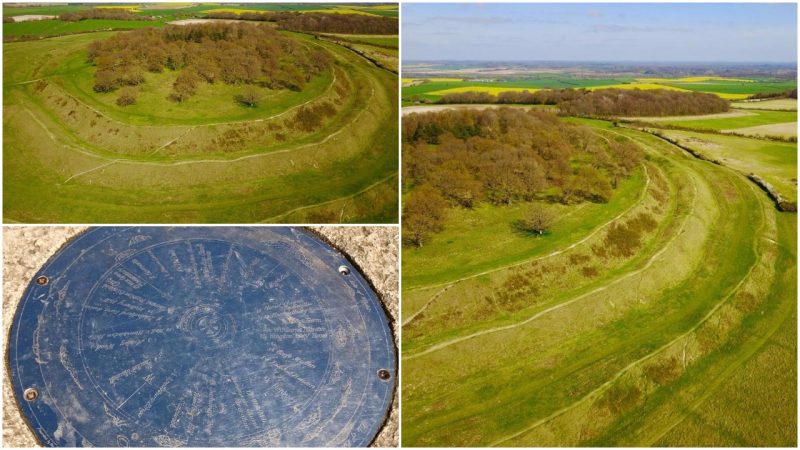The Iron Age hill fort in East Dorset, England, known as Badbury Rings, was most probably constructed by the Durotriges tribe who inhabited the area before the Roman invasion.
It is believed that the Durotriges were the first real opposition that the Romans encountered and were one of the two tribes that fought against the future emperor Vespasian and the 2nd Legion in the early phases of the invasion.
Hill forts had existed in Britain from the Bronze Age, but what is interesting about the Durotriges is the fact that they still occupied hill forts when the Roman invasion started. One of the most fascinating of these Durotrigan hill forts is Badbury Rings.
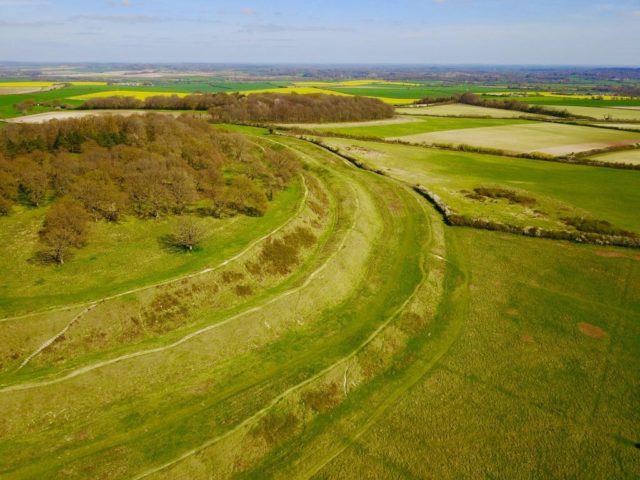
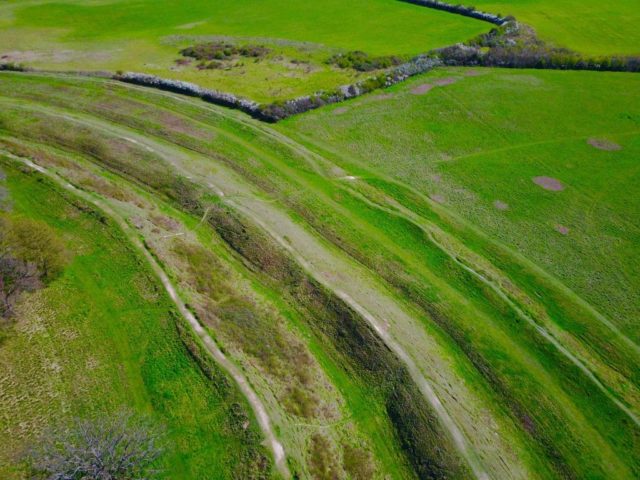
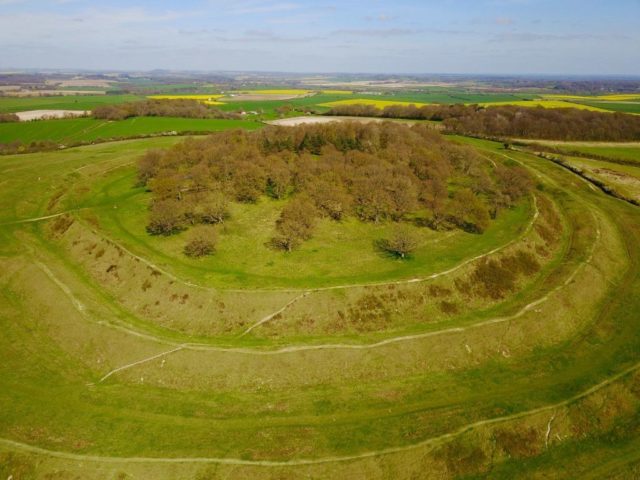
Badbury Rings consists of three concentric rings of a bank and ditch construction, dug to a depth of almost 20 feet. However, it seems that this was not enough to stop the advance of Vespasian and the 2nd legion who managed to conquer Badbury Rings.
Although there’s no clear evidence, it is speculated that the Romans established a town outside the fort called Vindocladia. It is said that Vindocladia became one of the biggest Roman towns in Dorset and excavations that started at the beginning of the 1990s uncovered pottery, robber trenches, tesserae and evidence for iron working.
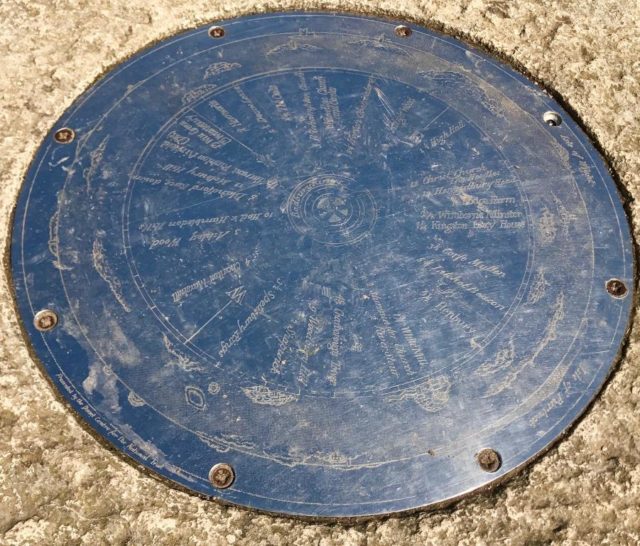
Apparently, Badbury Rings was of a great strategic significance for the Romans since their road network cut across Dorset. There were five Roman roads near Badbury Rings, including a military road from the Lake Farm fort, 3 miles southeast of Badbury, that passed by the northeast side of Badbury Rings on its way to Hod Hill further north. In the later Roman period, another road was built that passed through Vindocladia and led to the roman town of Dorchester.
Excavations also revealed that West of Badbury Rings there is a Roman/Celtic temple that was used from about 0AD to 400AD. Nearly 200 Roman coins and more than 20 Durotrigan coins were found at the site, as well as roofing tiles, painted wall plaster, jewelry, and pottery.
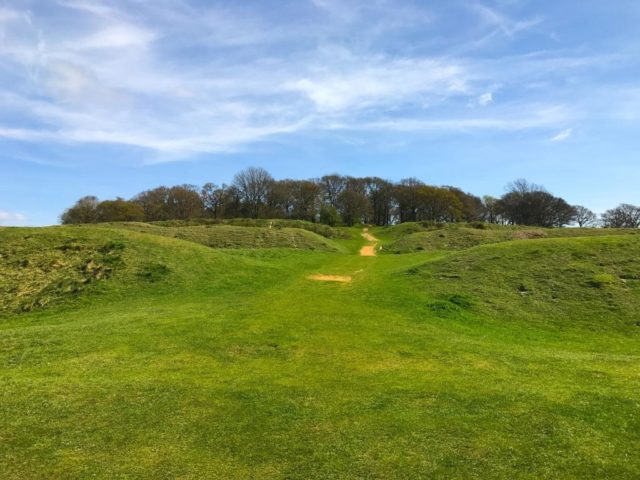
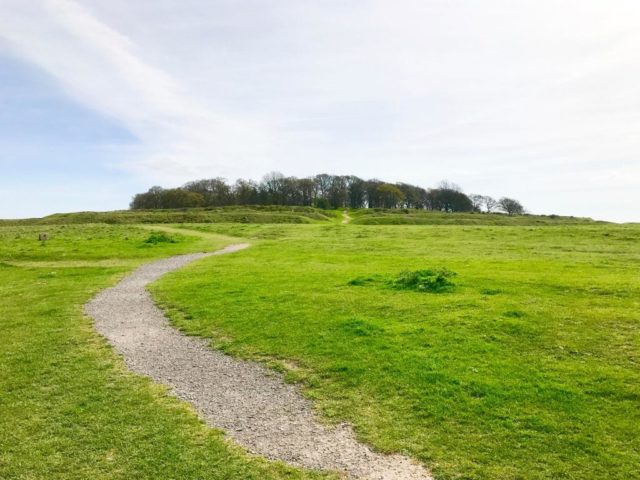
Some people believe that Badbury Rings is the site of Mons Badonicus (Mount Badon), where King Arthur fought his greatest battle against the Saxons. There is no firm evidence to back this up, but the similarity between the names Badbury and Badon suggest that there is a possibility that Badbury Rings is the location of the battle.
A legend has it that at midnight King Arthur and his Knights return to haunt the battlefield. Another legend tells how marching Roman legionaries haunt Badbury Rings. But, of course, these legends are just a part of the fascinating history of Badbury Rings.
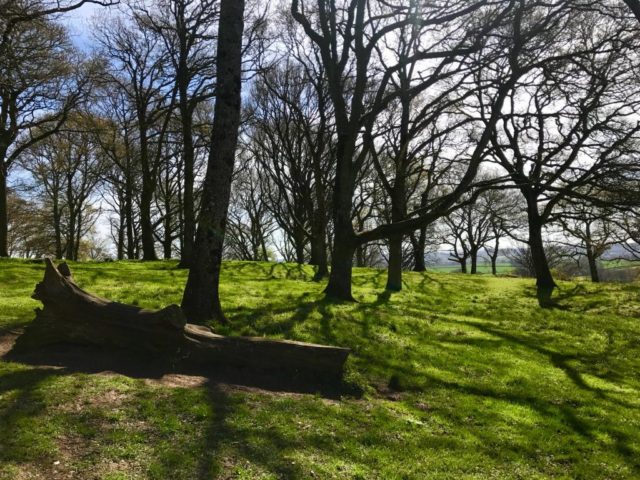
The site, which was privately owned until 1983, is now part of the Kingston Lacy estate and it belongs to the National Trust, who have provided free access. It is a popular tourist destination that offers fabulous views across the Dorset countryside and a history that goes back thousands of years.
We made an incredible 4K Drone Footage of Badbury Rings, and anyone who wants to experience the magnificence of this Iron Age hill fort is free to watch it below.
